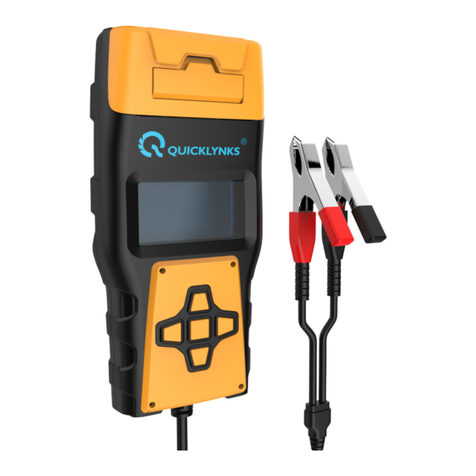
④
5
of factors, including erasing of diagnostic trouble codes (DTCs) with a code reader or a disconnected battery, can result
in Readiness Monitors being set to monitors are constantly evaluating, they will be reported as “Redy?all of the time. If
testing of a particular supported non-continuous monitor has not been completed, the monitor status will be reported as
Ready.
In order for the OBD monitor system to become ready, the vehicle should be driven under a variety of normal operating
conditions. These operating conditions may include a mix of highway driving and stop and go, city type driving, and at
least one overnight-off period. For specific information on getting your vehicleowner.
2.6 OBD II Definitions
Powertrain Control Module (PCM) -- OBD II terminology for the on-board computer that controls engine and drive train.
Malfunction Indicator Light (MIL) -- Malfunction Indicator Light (Service Engine Soon, Check Engine) is a term used for the
light on the instrument panel. It is to alert the driver and/or the repair technician that there is a problem with one or more
of vehicle's systems and may cause emissions to exceed federal standards. If the MIL illuminates with a steady light, it
indicates that a problem has been detected and the vehicle should be serviced as soon as possible. Under certain
conditions, the dashboard light will blink or flash. This indicates a severe problem and flashing is intended to discourage
vehicle operation. The vehicle onboard diagnostic system cannot turn the MIL off until the necessary repairs are
completed or the condition no longer exists.
DTC -- Diagnostic Trouble Codes (DTC) that identifies which section of the emission control system has malfunctioned.
Enabling Criteria -- Also termed Enabling Conditions. They are the
vehicle-specific events or conditions that must occur within the engine before the various monitors will set, or run. Some
monitors require the vehicle to follow a prescribed
cycles vary among vehicles and for each monitor in any particular vehicle.
Please refer to the vehicle's factory service manual for specific enabling procedures.
OBD II Drive Cycle -- A specific mode of vehicle operation that provides
conditions required to set all the readiness monitors applicable to the vehicle to the “eady?condition. The purpose of
completing an OBD II drive cycle is to force the vehicle to run its onboard diagnostics. Some form of a drive cycle needs
to be performed after DTCs have been erased from the PCMmemory or after the battery has been disconnected.
Running through a vehiclefaults can be detected. Drive cycles vary depending on the vehicle and the monitor that needs
to be reset. For vehicle specific drive cycle, consult the service manual.
Freeze Frame Data -- When an emissions related fault occurs, the OBD II
system not only sets a code but also records a snapshot of the vehicle operating parameters to help in identifying the
problem. This set of values is referred to as Freeze Frame Data and may include important engine parameters such
as engine RPM, vehicle speed, air flow, engine load, fuel pressure, fuel trim value, engine coolant temperature, ignition
timing advance, or closed loop status.
Fuel Trim (FT) - Feedback adjustments to the base fuel schedule. Short-term
fuel trim refers to dynamic or instantaneous adjustments. Long-term fuel trim refers to much more gradual adjustments
to the fuel calibration schedule than short-term trim adjustments. These long-term adjustments compensate for vehicle
differences and gradual changes that occur over time.
3. Product Descriptions
3.1 Outline of AUTO SCANNER
①




























